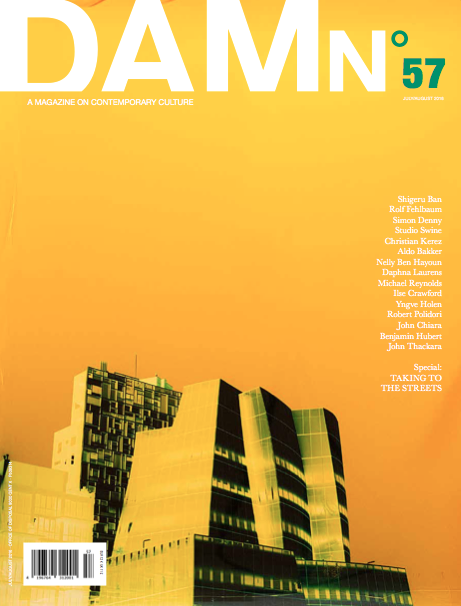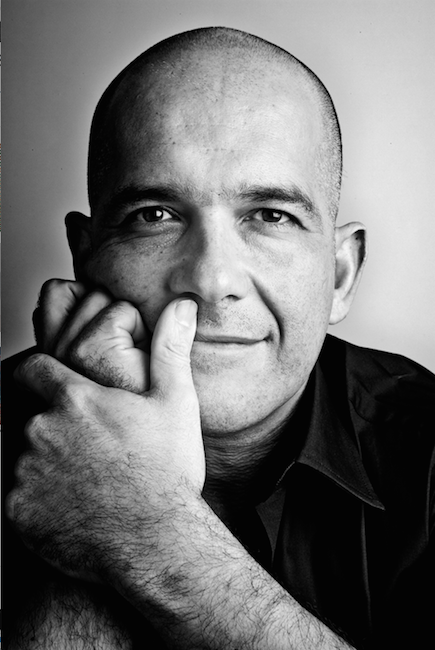With Aravena’s practice Elemental also recently being issued the most coveted award in the profession, the Pritzker Prize, it is clear that the architect’s flash of glittering glory comes from his great ability to juggle the two major forces in current architectural think- ing. While Elemental has been extremely shrewd in re-marketing a model of cheap incremental architecture for private housing companies, Aravena has produced exquisite buildings for universities and for wealthy clients, each addressing the standards and aspirations seen emanating today from the eld’s divergent tastemakers. Between a genuine yearning to learn from the informal, and the elegant vindication of architecture’s inner codes, Aravena is everywhere you need to be right now.
 Looking for a new way to balance opposite poles, Aravena’s contest for this Biennale was in fact to count the troops and understand whether enough architect contingents that normally defend an ‘immanent’ architecture quality were willing to refocus their typically inward-looking practice on very palpable ‘external’ problems: the growth of economic and social inequality, lack of resources, ecological imbalance, political instability, overpopulation, informality & favela porn, migrant fluxes, refugee crises, and so on. This provided a curious mix of presentations in which starchitects were discretely pushed to the borders of the Arsenale, while a selection of aspiring luminaries from the academic and publishing circuits joined forces with those who, until now, have been discretely working on the side- lines and dealing with the everyday architecture of scarcity and banality.
Looking for a new way to balance opposite poles, Aravena’s contest for this Biennale was in fact to count the troops and understand whether enough architect contingents that normally defend an ‘immanent’ architecture quality were willing to refocus their typically inward-looking practice on very palpable ‘external’ problems: the growth of economic and social inequality, lack of resources, ecological imbalance, political instability, overpopulation, informality & favela porn, migrant fluxes, refugee crises, and so on. This provided a curious mix of presentations in which starchitects were discretely pushed to the borders of the Arsenale, while a selection of aspiring luminaries from the academic and publishing circuits joined forces with those who, until now, have been discretely working on the side- lines and dealing with the everyday architecture of scarcity and banality.
As such, along with the newcomers who had missed the previous parties, the usual suspects of the architectural world reappeared in new clothing – giving this Biennale an aura of what could be called the ‘microwave syndrome’. From the Swiss minimalists to the poverty-savvy Portuguese, from the prolific Japanese to the crisis-stricken Spanish (with a broad retrospective that won them the Golden Lion), many buildings and projects that had been around for a while in blogs and journals resurfaced in novel discursive garments, with some of them only barely customising existing formal recipes to answer the current turn of social and political awareness.
 Architects from Latin America were, of course, in their natural element. They proudly showed the work that, due to the continent’s condition, has in- deed been at the avant-garde of an alliance between a radical lack of resources and a resourceful architecture culture. On the other extreme, and even if called upon to respond to an urban disaster such as Detroit, the North American parametricists, much like the oblivious Russians, revealed difficulties in moulding their formalist mindsets to the obvious change of sensibility around them.
From my personal point of view, after 2014’s Uneven Growth project, I was satis ed to see that Thomas Pickerty had caught on, and that the growth of social inequality now emerged in the opening statements of innumerable national pavilions. Moreover, one of the MoMA exhibition participants, Lagos-based Kunlé Adeyemi, was now hailed with the Silver Lion for his emergent practice. In any case, the best proposals in the Biennale were those that used their participation there to trigger new processes of investigation into specific problems. Tatiana Bilbao was one of the few invitees that, rather than reheating some old project, took the money and applied it back home in Mexico to start up much-needed local action. Curiously, the Mexican Pavilion adopted the same strategy by charting and unfurling new participatory designs around the country. The Austrian and British curators launched elegant initiatives that had teams of designers looking at the logic of current and future households. The Italian Pavilion was per- haps the most successful in nurturing initiatives that teamed upcoming designers such as Matilda Cassani and Antonio Scarponi with Italian NGOs to address local health or criminal issues – which also reveals where old, wealthy Europe is heading.
In the midst of a kaleidoscope of different takes on the idea of ‘front’ – including the paradoxical return to locally sourced traditional materials as a ‘new’ paradigm of sustainability – one masterly starchitect was witty enough to show everybody why his recognition is deserved. Foster + Partners launched a project for a drone port in Rwanda, which is at the pinnacle of what current technology may offer as a solution for deprived contexts. Incidentally, the project is also financed by the architect’s own foundation. This is a show of generosity as well as an achievable feat, both in terms of the adequate architectural concept and the ideas it underlines. It goes to the source of the omnipresent refugee crisis by envisioning a possibility for African countries to take a step up the ladder without the massive infrastructural investment that led most developed countries to unsustainable levels of debt. Imagining a landing structure that allows for the transport of medicine and goods rather than people, Foster’s drone port potentially offers more democratic access than most architecture on show at the Biennale.
In conclusion, the 2016 Architecture Biennale is too much about the past and not so much about the ideas that may be envisioned for the future out of the richness of our current knowledge, design intelligence, and the emerging technological possibilities. This is where the lacking curatorial drive can be identified. You may have the right mindset and a great brief as your starting point. You may be a practicing architect who has thrived to achieve a balance between sincere social commitment and disciplinary excellence. All good. But directing the participants of a major biennale to present projects and ideas that go beyond current know-how also needs more than just good intentions.
The Venice Architecture Biennale runs until 27 November.
Architects from Latin America were, of course, in their natural element. They proudly showed the work that, due to the continent’s condition, has in- deed been at the avant-garde of an alliance between a radical lack of resources and a resourceful architecture culture. On the other extreme, and even if called upon to respond to an urban disaster such as Detroit, the North American parametricists, much like the oblivious Russians, revealed difficulties in moulding their formalist mindsets to the obvious change of sensibility around them.
From my personal point of view, after 2014’s Uneven Growth project, I was satis ed to see that Thomas Pickerty had caught on, and that the growth of social inequality now emerged in the opening statements of innumerable national pavilions. Moreover, one of the MoMA exhibition participants, Lagos-based Kunlé Adeyemi, was now hailed with the Silver Lion for his emergent practice. In any case, the best proposals in the Biennale were those that used their participation there to trigger new processes of investigation into specific problems. Tatiana Bilbao was one of the few invitees that, rather than reheating some old project, took the money and applied it back home in Mexico to start up much-needed local action. Curiously, the Mexican Pavilion adopted the same strategy by charting and unfurling new participatory designs around the country. The Austrian and British curators launched elegant initiatives that had teams of designers looking at the logic of current and future households. The Italian Pavilion was per- haps the most successful in nurturing initiatives that teamed upcoming designers such as Matilda Cassani and Antonio Scarponi with Italian NGOs to address local health or criminal issues – which also reveals where old, wealthy Europe is heading.
In the midst of a kaleidoscope of different takes on the idea of ‘front’ – including the paradoxical return to locally sourced traditional materials as a ‘new’ paradigm of sustainability – one masterly starchitect was witty enough to show everybody why his recognition is deserved. Foster + Partners launched a project for a drone port in Rwanda, which is at the pinnacle of what current technology may offer as a solution for deprived contexts. Incidentally, the project is also financed by the architect’s own foundation. This is a show of generosity as well as an achievable feat, both in terms of the adequate architectural concept and the ideas it underlines. It goes to the source of the omnipresent refugee crisis by envisioning a possibility for African countries to take a step up the ladder without the massive infrastructural investment that led most developed countries to unsustainable levels of debt. Imagining a landing structure that allows for the transport of medicine and goods rather than people, Foster’s drone port potentially offers more democratic access than most architecture on show at the Biennale.
In conclusion, the 2016 Architecture Biennale is too much about the past and not so much about the ideas that may be envisioned for the future out of the richness of our current knowledge, design intelligence, and the emerging technological possibilities. This is where the lacking curatorial drive can be identified. You may have the right mindset and a great brief as your starting point. You may be a practicing architect who has thrived to achieve a balance between sincere social commitment and disciplinary excellence. All good. But directing the participants of a major biennale to present projects and ideas that go beyond current know-how also needs more than just good intentions.
The Venice Architecture Biennale runs until 27 November.

Introductory Room at Venice Architecture Biennale 2016
Built with the 100 tons of waste material generated by the dismantling of the previous Biennale, it features 14 kilometers of metal studs suspended from the ceiling, with 10,000 square-metres of plasterboard dividing each space and serving to show different project information. The display is about recycling, reuse, and upcycling, while also showcasing the amount of waste material generated by exhibitions once they are finished.
As such, along with the newcomers who had missed the previous parties, the usual suspects of the architectural world reappeared in new clothing – giving this Biennale an aura of what could be called the ‘microwave syndrome’. From the Swiss minimalists to the poverty-savvy Portuguese, from the prolific Japanese to the crisis-stricken Spanish (with a broad retrospective that won them the Golden Lion), many buildings and projects that had been around for a while in blogs and journals resurfaced in novel discursive garments, with some of them only barely customising existing formal recipes to answer the current turn of social and political awareness.

Italian Pavilion / Presented is Codice Italia, site-specific works by 19 artists from around the world who have long practiced their art in close connection with Italy, each with a proper understanding of Italian-ness.
 This article appeared in DAMN°57. Order your personal copy.
This article appeared in DAMN°57. Order your personal copy.








